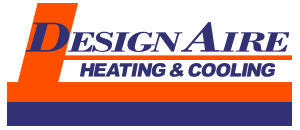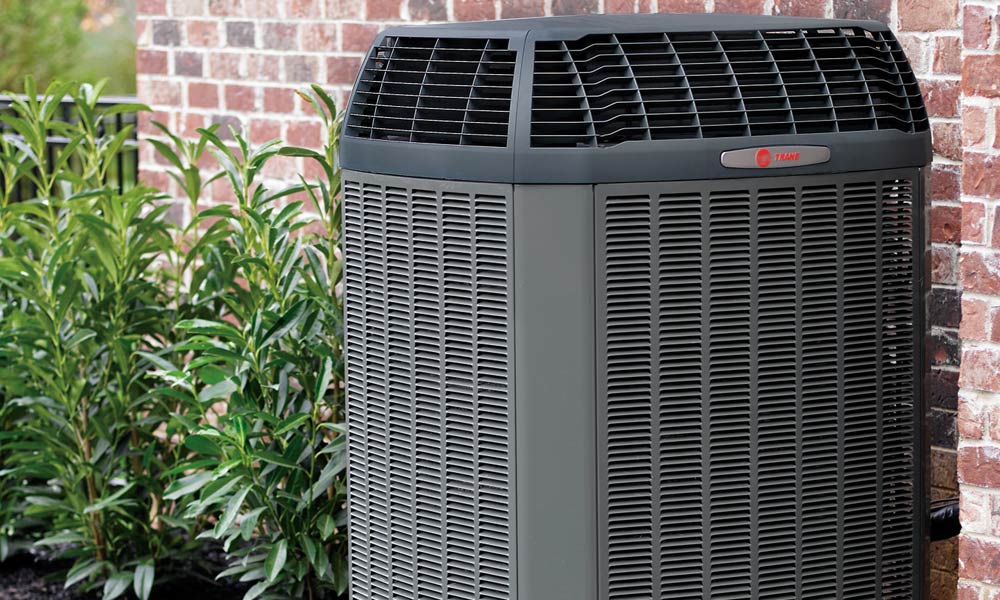St. Louis and St. Charles families have trusted Design Aire to provide expert heating and cooling advice and services for their homes since 1904. If you find yourself wondering why your upstairs gets so hot, you’re not alone! Below, our professional technicians share what may be the cause and tips on how to solve the issue and make your home feel more comfortable.
Ways to Cool Down Your Second Floor
If your second floor is getting too hot, use these 10 tips to keep it cool and fight the heat.
- Redirect Airflow
- Insulate and Ventilate Your Attic
- Open/Close Rooms You Don’t Use
- Change Air Filters
- Insulate Your Ductwork and Windows
- Adjust the Fan Setting on Your Thermostat
- Use Floor and Ceiling Fans
- Install a Separate Thermostat Upstairs
- Add an Extra HVAC System
- Install a Zone Damper System
Before jumping straight into tips on trying to fix the issue, it’s important to understand what might be causing the upstairs heat.
Common Causes of Heat Upstairs
Design Aire is an HVAC company that has been in business for over 100 years, and our technicians have identified these issues as the top common causes of second-floor heat:
Hot Air
It’s just physics that hot air rises and cold air sinks, which means your upstairs typically gets hotter than your lower levels. If your HVAC unit is on the first floor, it has to simultaneously push the hot air out as it pushes cooler air into a room, thus the system has to work harder to distribute cool air to the second floor. A few factors that determine how hard your HVAC unit has to work to cool your second floor include the number of rooms in your home, how up-to-date the unit is, and how well equipped the system is for cooling.
Hot Roof
Another reason why your second floor could be getting too hot in the summer is because of your roof. Unless you have shady tree cover, your roof absorbs the sun’s heat. This hot air seeps into your attic and then into your top floor, making it harder for the system to cool. If you don’t have attic space as a buffer or your roof isn’t well-insulated, then your upstairs will automatically feel hotter due to the heat naturally coming in from the roof.
Faulty Ductwork or Insulation
Ducts are responsible for absorbing the cool air from your HVAC system and distributing it throughout your home. If your ducts are leaking or old, there’s not enough ductwork reaching the second floor, or you have improperly installed insulation, then your air conditioner will be forced to work harder and it may struggle to evenly cool your home.
Old AC Unit
If your air conditioner isn’t sufficiently cooling your home, it could be nearing the end of its lifespan. Most AC units last up to 15 years, so if that time is approaching, you may want to consider replacing your old unit with a newer, more energy-efficient model. An updated unit could help establish an equilibrium in temperature between floors and save you in utility costs. When you have your AC replacement done by Design Aire, you can count on our professional service as well as the AC unit itself because we only install the best, long-lasting air conditioners, such as Trane AC units.
You’re Using a Single-Zone System
Single-zone systems are separate air conditioning units that cool a single area in your home. If you are wanting to manage the temperature in one room or dedicated space, they work great; however, they’re not so great if you are trying to keep your entire second floor cool during the hot summer! Instead, you may want to consider switching to a zone damper system, which lets you control the temperature in two or more zones.
Tip #1: Redirect Airflow
If you have a basement, you can locate your HVAC system’s dampers on the ducts leading to the first floor and close them about halfway down, which will push more airflow up to the second floor. If you don’t have a basement, or can’t locate the dampers, there may be another way to redirect airflow — your air vents may have levers or dials that you can adjust to help control airflow in specific rooms. If so, keep the vents on your second floor fully open while only keeping vents on your first floor partially open to force more cool air to circulate to your second-floor rooms. If your home has top-to-bottom return vents, open the top vents during the summer to force your system to take in the warm air gathering at the top of the room. This allows the warm air to be absorbed and redistributed as cold air throughout your home.
Tip #2: Insulate and Ventilate Your Attic
Insulation plays a crucial role in keeping your home comfortable. Proper and adequate insulation in the attic will lessen the amount of heat that reaches your second floor. Additionally, you want to ensure that your attic is ventilated to get rid of unnecessary moisture and heat that may settle up on the second floor.
A well-ventilated attic may be achieved with an attic vent or attic fan. An attic vent allows the hot air that rises inside your house to flow outdoors and an attic fan will help circulate the air, which ultimately limits the amount of hot air lingering upstairs. You may need one or the other, or both! It is best to consult a professional to have them help determine what option is right for your house and to perform the installation.
Tip #3: Open/Close Rooms You Don’t Use
If you’re using a central air conditioner, open all of the upstairs doors. This allows cold air to flow more freely throughout the second floor and reduces stress on the unit. If you’re using a supplemental air conditioning unit such as a window or ventless air conditioner, close all of the upstairs doors that you don’t use often. This allows you to direct the flow of the cold air being delivered by the AC unit into the rooms you do use.
Tip #4: Change Air Filters
Dirty air filters can restrict the flow of cool air throughout your home and force your HVAC system to work harder. Regular air filter cleaning or replacement is highly recommended to ensure airflow isn’t hindered.
Tip #5: Insulate Your Ductwork and Windows
If you have leaky ductwork, you may need to have the leaks professionally covered with insulation or repaired with aluminum foil tape or mastic sealant. Similarly, you will want to have all cracks, holes, and gaps around windows insulated or sealed to prevent seepage.
Tip #6: Adjust the Fan Setting on Your Thermostat
Changing the fan setting from “auto” to “on” will keep your HVAC system’s blower fan constantly running, which will help mix the air more evenly throughout the entire house. Running your fan doesn’t use a lot of energy; in fact, it may actually lower energy usage because your HVAC system won’t need to cycle as often.
Tip #7: Use Floor and Ceiling Fans
A well-positioned fan can enhance the cooling capabilities of your central AC. Floor and ceiling fans can help circulate the cold air that may be lingering near the floor. Floor-standing fans help distribute the cold air generated by your air conditioner at a faster rate and you can direct the air to a specific area that you feel is not adequately being cooled. Ceiling fans in your upstairs rooms will also help keep the air moving and are a great complement to your air conditioner. Both types of fans can also stop hot air from rising and settling in a room, thus reducing the amount of energy your AC unit uses as it won’t have to work as hard.
Tip #8: Install a Separate Thermostat Upstairs
If your ground floor is one temperature while your second floor is significantly warmer, only having one thermostat for your entire house may result in an inaccurate reading that results in your AC unit not compensating properly for the heat upstairs. You may want to consider having a thermostat installed on the second floor so your central AC unit can get a more precise reading of the second floor’s temperature.
Tip #9: Add an Extra HVAC System
If after trying other options your upstairs still won’t cool down, your home may be too large for your current HVAC system. Consider installing a window air conditioner on the second floor of your house. Make sure to be strategic about where you place your window AC unit. Place it in a window that’s in the hallway or in a room that has a window directly across from an open door that leads to the hallway. If you don’t want a window air conditioner, contact our professional team to discuss upgrading to a larger HVAC system or adding a second system upstairs. As the #1 Trane dealer in the Midwest, we can help determine the best solution for your family and budget.
Tip #10: Install a Zone Damper System
A zoned system is a single HVAC system serving two or more zones, rather than two separate HVAC systems. Its components include an HVAC system (a furnace combined with an AC, and a heat pump and air handler are the two most common) and one to twenty or more motor-driven dampers to control airflow to each zone. Depending on the ductwork design, the system might require a damper for each major branch off of the trunk or smaller branch.
HVAC zoning is best either when you’re building a new home (because one HVAC system and zoning equipment costs less than two HVAC systems) or your home is already built and you don’t need a second HVAC system because your current one makes enough warm and cool air for your home, you just need the added zoning equipment.
We do not recommend DIY zoning. Our team knows what duct sizes are required for proper airflow capacity and can determine how many zones are compatible with your HVAC system and what types of dampers will best meet your needs.
Contact Our St. Louis & St. Charles, MO Heating and Cooling Company
We at Design Aire are committed to providing St. Louis and St. Charles area residents with quick and affordable heating and cooling solutions. Our certified HVAC technicians can help solve the problem of why your second floor is hotter than your first floor and make it more comfortable. Call or contact us to request a free estimate!
![]() Contact the Air Conditioning Experts of St. Louis: 314-739-1600
Contact the Air Conditioning Experts of St. Louis: 314-739-1600
Contact the Air Conditioning Experts of St. Louis, MO:
314-739-1600








Contact the St. Louis & St. Charles, MO Heating & Cooling Experts





